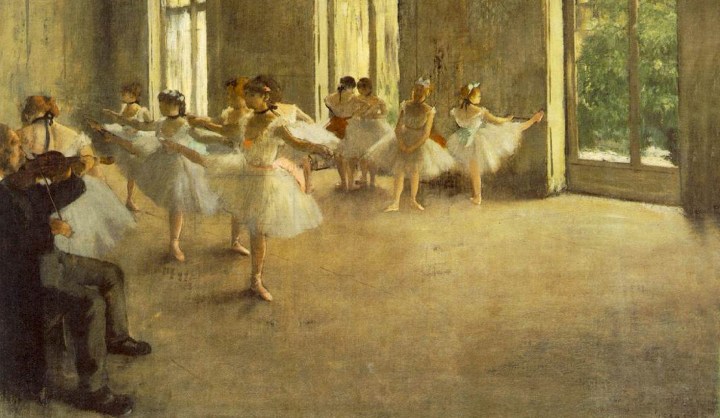Maverick Life
Popcorn ballet: Easy to digest, delicious to swallow

In the age of instant knowledge, there should be a whole new way to consume ballet. ALEX ELISEEV pops out a few ideas.
Whispering in my ear between acts, my wife came up with what can only be an all-new term to describe a certain kind of ballet experience: popcorn ballet.
We were lost in another magnificent performance at the Joburg Theatre, watching some of Russia’s best ballet dancers on stage, when the idea popped (forgive me) into her head. The show, Russian Ballet Stars, comprised ten short dances, four opera pieces and a grand finale with all of the dancers on stage.
Unlike traditional ballets, there were no grand sets and props, no dazzling costumes, no storyline, just brief explosions of brilliance. The performances covered some of the classics: Swan Lake, Carmen and Don Quixote. The show was a mix not only of ballet and opera, but also of traditional and modern dancing, from the Flames of Paris Pas de Deux to the enchanting acrobatic masterpiece Requiem, performed by Oleg Gabyshev and Lyubov Andreyeva and choreographed by the world-renowned Boris Eifman.
And so ‘popcorn ballet’ was born, the idea of watching something breathtakingly beautiful without having to concentrate on a complex plot. Each act like a popcorn kernel, easy to digest, delicious to swallow.
When the interval came, we decided to keep the innovation going. Why stop with a couple of words? We thought about how wonderful it would be to blend ballet with some of the new technology being developed, particularly Google Glass and the concept of augmented reality. Imagine, for a moment, going to the ballet and wearing glasses that throw up information as the performance unfolds. Names of dancers, their profiles, the name of the composer whose music is accompanying the piece. You could even order the music from iTunes or buy a DVD featuring a dancer whose movement has gripped your soul. As Bolshoi Ballet’s Maria Mishina spins on point – ten, twenty, thirty times, you lose count after a while – wouldn’t it be great to have a count flickering in the corner of your eye? Don’t know the story behind the Moldovanka song being belted out by Larisa Akhmetova? No problem, just Google it quietly and then pretend you always did. Blown away by the fact that the Dying Swan is being performed by two dancers simultaneously? Record a snippet of it and post it online. Okay, so all your friends are watching the World Cup and no one will see it, but you’ll feel better for it.
To digress for a moment: Seeing the black and white swan on stage at the same time was a remarkable experience. Not only in that it was so unusual and mesmerising, hypnotic almost, but in that local dancer, Kitty Phetla, was every bit as brilliant as her counterpart Natalia Matsak, who has travelled the world (from Japan to Germany) and is an award-winning, Honoured Artist back home.
To digress for a moment longer: Natalia Matsak was born in Ukraine and works in Kiev. She, and other dancers from that country, shared a stage with Russian dancers for the three days over which the show ran. Interviewed on television, the dancers spoke about the conflict back home – which continues to simmer – and the ability of the arts to deliver a message of peace.
Back to the technology. There are a few niggles which would have to be sorted out. For example, people couldn’t give the smart glasses verbal commands. Inevitably, someone would blurt out: “Fast food near the Joburg Theatre” or “What’s the score between Columbia and Brazil?” at the wrong time. Nor could they wave their hands around scrolling or typing. But there’s bound to be some solution out there. We’ve come a long way since those tiny opera glasses with the mother-of-pearl finishes…
A war would also have to be fought between the purists and those wanting to fuse technology into such an old world as classical ballet. Much blood (or at least blog post space) will be spilt, but ultimately peace will prevail and it will all come down to: if you don’t want it, don’t use it. Or, at the very least, the settings could always be adjusted.
What I would have looked up immediately is the past work of Oleg Gabyshev and his partner Lyubov Andreyeva. For me, they were the stars of the night. Gabyshev’s solo performance in Russian Macho was terrific. His body seemed not to be made of bones and flesh but of rubber, which could flow like a wave of water or stiffen like rock. In all the previous times I have watched a blend of classic and modern dancing, I had always been drawn to the past, marvelling at traditional moves executed to iconic music. Not this time. Gabyshev’s next piece Russian Laziness, performed with his partner, put me into such a trance I virtually missed the whole of the next dance. Gabyshev and Andreyeva seemed to sail across the stage, tie themselves into acrobatic knots and then spring free, or balance on each other in dramatic shows of strength. There was a chemistry between them which could be felt from any seat in the house. In the second half, they performed Requiem to Tchaikovsky, which drowned out everything that followed.
I’m not a big fan of opera (I probably don’t understand it) and there was one act during which I may have checked some emails, had I been wearing those smart glasses, but overall, but the show made for a wonderful night out. Plus, everyone knows that even if there are one or two uncooked or burnt kernels, there is no such thing as a bad packet of warm buttery popcorn. DM
The Russian Ballet Stars was brought to South Africa by Dirk Badenhorst and directed by Ruslan Nurtdinov.
Image: Edgar Degas – Rehearsal


















 Become an Insider
Become an Insider